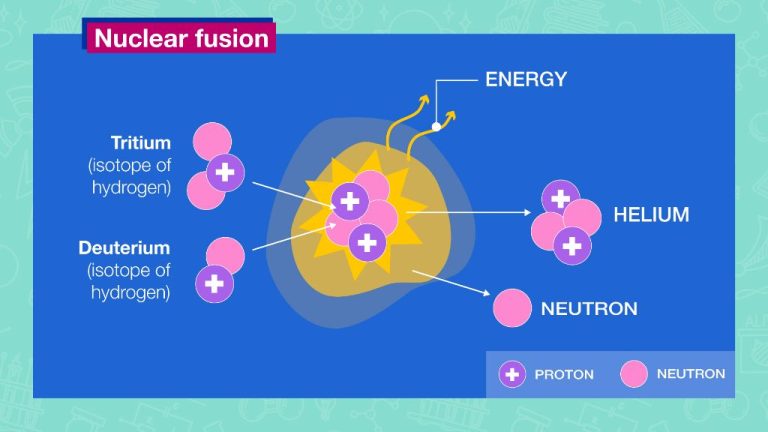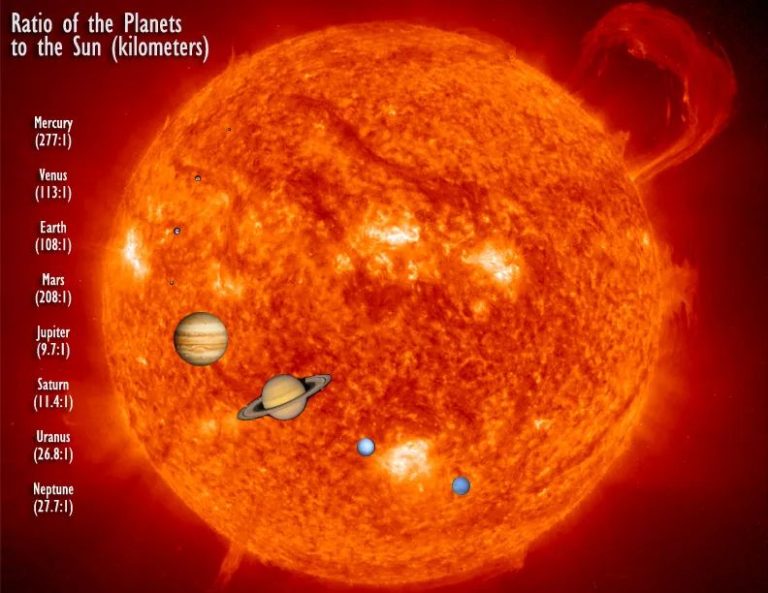What Are The Main Types Of Radiant Energy That Come From The Sun?
The Sun is the primary source of energy for life on Earth. It generates a wide spectrum of radiation that reaches our planet. The different types of radiant energy from the Sun have varying wavelengths and frequencies that produce diverse effects in the Earth’s atmosphere, biosphere, and geosphere. This article will outline the main forms of radiation emitted by the Sun.
Visible Light
Visible light is the radiant energy from the Sun that humans can see with their eyes. It has wavelengths between 380-750 nanometers. The different wavelengths of visible light correspond to different colors – red, orange, yellow, green, blue, indigo, and violet. Shorter wavelengths are the cooler colors like blue and violet, while longer wavelengths are the warmer colors like red and orange.
When sunlight passes through a prism, it separates into these different visible colors. Our eyes detect these wavelengths and our brains interpret them as color. Visible light makes up a small portion of the full electromagnetic spectrum emitted by the Sun. But it is the most familiar and immediately recognizable form of sunlight for us.
Visible light from the Sun supports nearly all life on Earth through photosynthesis. Plants, algae, and some bacteria convert the light energy of visible sunlight into chemical energy they use to grow and survive. Visible light also provides the illumination needed for humans and animals to see. Our eyes evolved to detect the wavelengths of visible light that reach the Earth’s surface.
Ultraviolet (UV) Radiation
The Sun emits ultraviolet (UV) radiation across a broad spectrum of wavelengths. This radiation is categorized into three main types:
- UV-A: The longest UV wavelength, from 315 to 400 nm. It can penetrate deep into the skin layers.
- UV-B: A medium wavelength, from 280 to 315 nm. It can cause sunburns and skin cancer.
- UV-C: The shortest UV wavelength, from 100 to 280 nm. It is mostly absorbed by the ozone layer before reaching Earth’s surface.
Too much exposure to UVB radiation can lead to various health effects like sunburn, skin aging, eye damage, and skin cancer. UVC radiation is especially damaging but is completely absorbed by the ozone layer and atmosphere before reaching the ground.
Depletion of the ozone layer by air pollutants is increasing the amount of UVB that reaches Earth’s surface. People need to take care to limit UV exposure by wearing sunscreen, hats, and sunglasses. UV radiation varies by location, time of day, season, and cloudiness.
Infrared Radiation
Infrared radiation from the Sun makes up over half of the total energy released from the Sun. Infrared light is divided into near, mid and far infrared regions based on wavelength. Near infrared has the shortest wavelengths while far infrared has the longest wavelengths.
Near infrared ranges from about 0.7 to 1.4 microns and is closest to visible light. These wavelengths border visible red light and can be detected by some digital cameras. Near infrared penetrates the atmosphere well and fuels photosynthesis in plants.
Mid infrared spans from 1.4 to 3 microns. These wavelengths are absorbed by the atmosphere but can be detected in astronomy using high altitude telescopes. On Earth, mid infrared is used in industry for thermal imaging of heat signatures.
Far infrared has the longest wavelengths, from 3 microns to 1 millimeter. Far infrared radiation is almost entirely absorbed by Earth’s atmosphere. In space, far infrared emissions can help study interstellar gases and dust clouds. On Earth, far infrared radiation is used in thermal imaging cameras to see heat signatures at night.
Overall, infrared radiation warms the planet, drives plant growth through photosynthesis and has a wide variety of applications in astronomy, industry and technology.
X-Rays
X-rays are a high-energy form of electromagnetic radiation produced in various solar phenomena. They have very short wavelengths, ranging from 0.01 to 10 nanometers, and high photon energies of 100 eV to 100 keV. X-rays emitted by the Sun come from the extremely hot corona and during solar flares.
The corona, the outer atmosphere of the Sun, is constantly releasing X-rays due to its extremely high temperatures of over 1 million kelvin. Thermal motion of electrons in the corona causes them to collide, emitting X-rays in the process. The corona also contains loops of solar material confined by magnetic fields that can reach temperatures over 3 million kelvin when flares occur, resulting in increased X-ray emissions.
Solar flares produce bursts of X-rays when magnetic energy is suddenly released, accelerating electrons to nearly the speed of light. These high-energy electrons spiral along magnetic field lines and collide with ions in the corona, a process called bremsstrahlung radiation that gives off X-ray photons.
X-rays from the Sun are mostly absorbed by Earth’s atmosphere. However, some solar X-rays can affect the ionosphere, contributing to radio blackouts during intense solar flares. X-ray telescopes in space are needed to study the Sun’s X-ray emissions directly for research on the solar corona and flares.
Gamma Rays
Gamma rays are the most energetic and dangerous form of electromagnetic radiation that comes from the Sun. They have the shortest wavelengths and highest frequencies of any electromagnetic waves. Gamma rays originate from the nuclear reactions in the Sun’s core. During large solar flares, bursts of gamma rays are also emitted.
Solar gamma ray emissions are associated with extremely energetic processes on the Sun. The high-speed collisions between accelerated particles during solar flares is one way that gamma rays are generated. These gamma ray bursts can last from minutes to hours during intense solar flares. The amount of gamma radiation released depends on the size and intensity of the solar flare.
Gamma rays from solar flares pose a health risk to any astronauts in space who are outside the protection of the Earth’s atmosphere. On Earth, the atmosphere shields us from most of the harmful effects of gamma radiation coming from the Sun. However, gamma rays have such high energy that increased exposure during intense solar storms can affect passengers and crew in high-altitude flights.
Microwaves
The Sun emits microwaves as part of its electromagnetic radiation spectrum. Microwaves have wavelengths that range from about 1 millimeter to 1 meter and frequencies between 300 MHz and 300 GHz. Though less intense than other types of radiation from the Sun, microwaves play an important role in astronomy and astrophysics.
On the Sun’s surface, microwaves are generated by thermal bremsstrahlung radiation, or braking radiation, as electrons are decelerated by charged particles. This occurs in the hot plasma of the Sun’s corona. Microwaves can also be emitted by magnetic fields through the process of gyromagnetic emissions.
Microwaves from the Sun are able to penetrate clouds and haze, allowing them to reach the Earth’s surface. They are used by astronomers to map the corona and measure variations in its temperature and density. Changes in microwave emissions can signify increased solar activity. Ground-based radio telescopes as well as space telescopes can detect microwaves from the Sun.
During periods of intense solar activity such as solar flares and coronal mass ejections, an increase in microwave radiation indicates electrons being accelerated to high energies by magnetic fields. Monitoring microwave emissions from the Sun provides data on the corona that is important for space weather forecasting.
Radio Waves
The Sun emits radio waves with wavelengths from a few millimeters to hundreds of kilometers. These long wavelength radio waves come from the corona of the Sun and solar flares. They are associated with the solar wind of charged particles that streams outward from the Sun’s corona. Radio emissions from the Sun can cause disturbances to communications systems on Earth when solar activity increases. The study of solar radio emissions provides information about the corona of the Sun, which is not otherwise directly observable. Radio telescopes on Earth can detect the long radio waves coming from the Sun’s atmosphere.
The wavelength of solar radio emissions ranges from about a millimeter to over a kilometer. The shorter wavelength end of solar radio emissions overlaps with microwaves. Longer radio waves from the Sun can penetrate the ionosphere and be observed on the surface of Earth. Sudden bursts of radio waves occur when large solar flares happen. These radio bursts can last from a few minutes to a few hours.
Regular monitoring of the Sun at radio wavelengths can provide an early alert for solar storms that may affect Earth. Radio emissions are classified into different types based on their wavelength, time variations, and origin in the corona. Knowing the types and wavelengths of radio emissions from solar flares helps scientists better understand the processes generating the radio waves in the corona.
Effects on Earth
The various types of radiation from the Sun interact with Earth’s atmosphere and surface in different ways:
Visible Light – Visible sunlight allows plants to photosynthesize and provides energy for life on Earth. Light is scattered and filtered as it passes through the atmosphere, creating the blue sky and sunrise/sunset colors.
Ultraviolet (UV) Radiation – Most UV rays are blocked by Earth’s ozone layer. Remaining UV rays cause sunburns and skin cancer. UV radiation also produces vitamin D in the skin.
Infrared Radiation – Infrared radiation is absorbed by the atmosphere and warms the air. The ground emits IR radiation, preventing Earth from getting too cold at night.
X-Rays & Gamma Rays – High frequency x-ray and gamma radiation from the Sun is fully absorbed by Earth’s atmosphere. This radiation can strip electrons from atoms and is harmful to life.
Microwaves & Radio Waves – Longer wavelength radiation like microwaves and radio waves mostly pass through the atmosphere. This allows for radio communication and cell phone signals.
Conclusion
The Sun produces a broad spectrum of electromagnetic radiation, from radio waves to gamma rays. The different types of solar radiation have distinct properties and effects on Earth. Visible light allows us to see, ultraviolet radiation causes sunburn, infrared radiation heats the planet, and high energy radiation like x-rays and gamma rays can ionize matter and penetrate deep into tissues. Understanding the nature of solar radiation is crucial, as it impacts climate, weather, technology, and human health. The interaction between the Sun’s output and the Earth’s atmosphere and magnetic field drives space weather events that can disrupt communications and power grids. Overall, solar radiation is essential for life, but also hazardous if exposure is excessive. With knowledge and care, humans can harness the benefits of solar energy while mitigating the risks.







